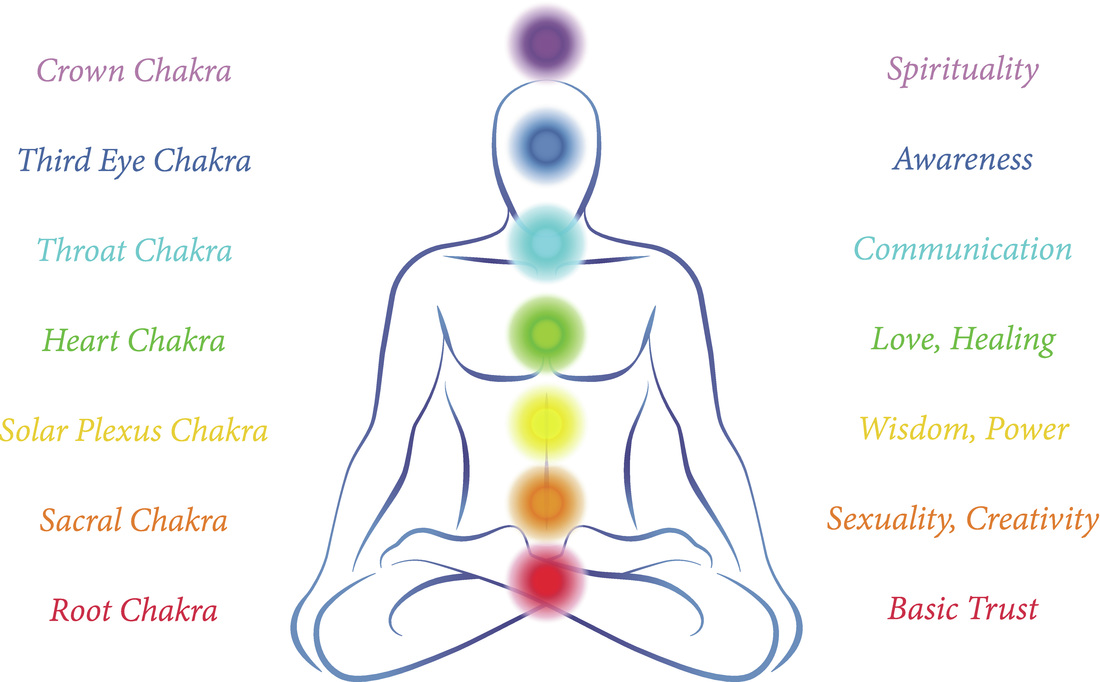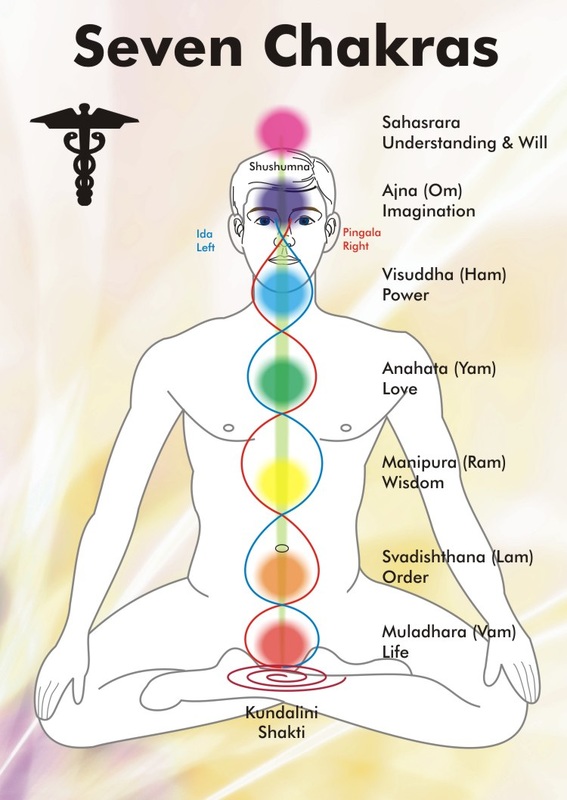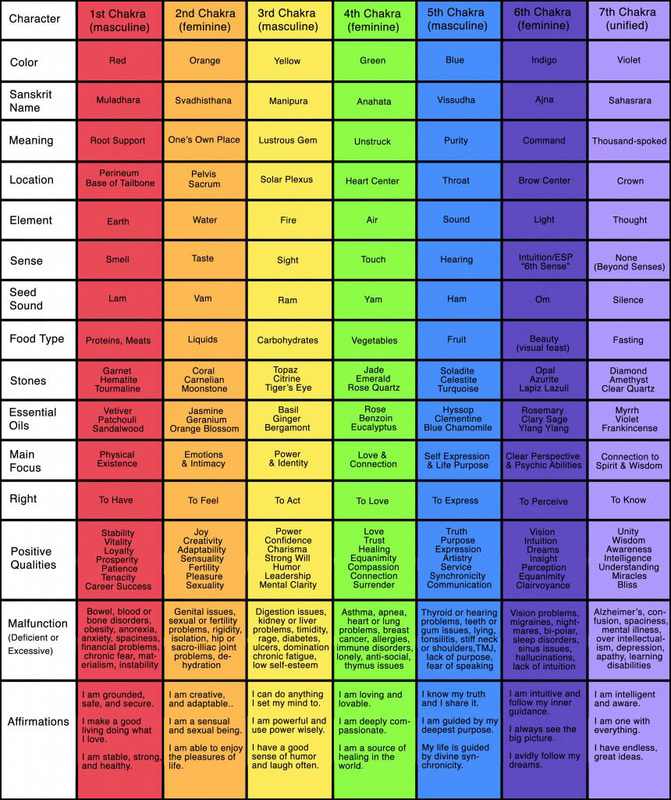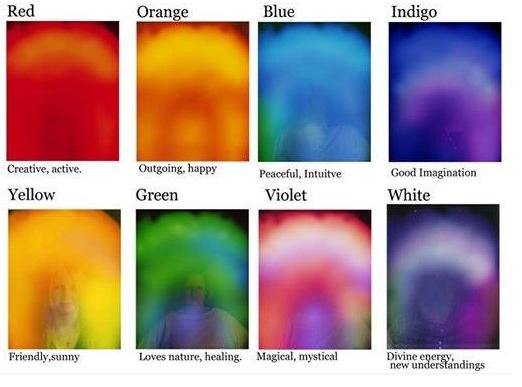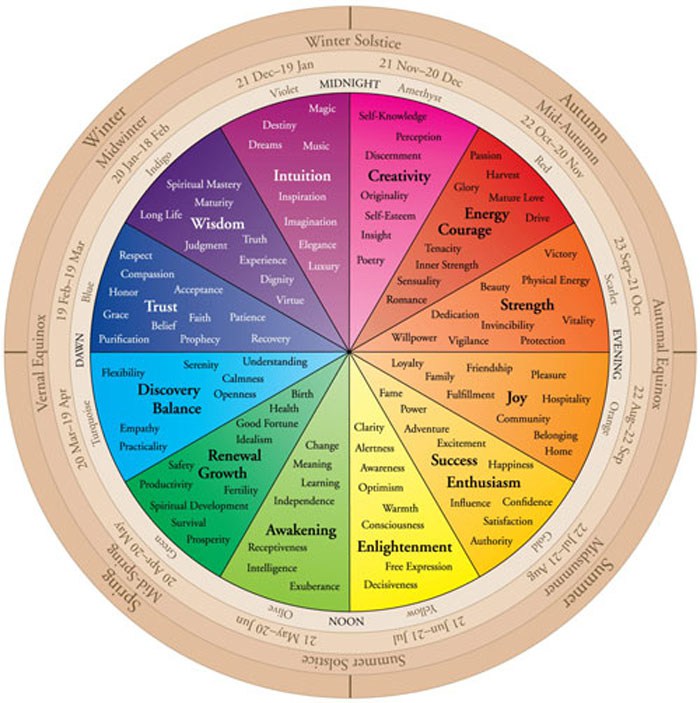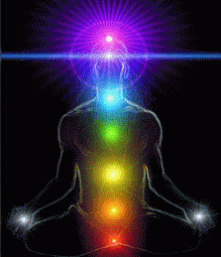As most of you probably know already, the Chakras are centers of our energetic body, they are first mentioned in the Upanishads, one of the oldest Hindu scriptures and they are the foundation of all yoga philosophy and practice. The Aura is the overall energetic field and for both various color frequencies are present and the power of different colors to trigger different physiological and psychological responses in humans is already scientifically certified.
My personal experience is that chakras and aura do exist, because I can see them and also interact with them. The strongest way to visualize and interact with energetic fields and their focal points is particularly by inner, 3rd eye vision in meditative trance, but I can also perceive them around real life beings and objects and also in photographs.
I experienced chakra activation spontaneously, without knowing what it is at the time, during an important crossroad in my life, and this was the moment when I started studying chakras, aura and energetic fields and have practiced meditation and a certain lifestyle in accordance with this experience and I have developed my personal method for this over the years.
My personal experience is that chakras and aura do exist, because I can see them and also interact with them. The strongest way to visualize and interact with energetic fields and their focal points is particularly by inner, 3rd eye vision in meditative trance, but I can also perceive them around real life beings and objects and also in photographs.
I experienced chakra activation spontaneously, without knowing what it is at the time, during an important crossroad in my life, and this was the moment when I started studying chakras, aura and energetic fields and have practiced meditation and a certain lifestyle in accordance with this experience and I have developed my personal method for this over the years.
Traditionally, there are 7 main Chakras (the ones I work with so far) connected by nadi, the channels (meridians) through which life force-vital energy (prana or qi) is distributed. Together, the 7 Chakras form what is traditionally called an image of Kundalini, the Serpent of Light, an aspect of the Divine Mother, the Great Goddess and the basis of most Yoga practices is activating the chakras up to the highest one, by progressively activating them through meditation and breathing techniques, mantras, asana, and most of all, a certain lifestyle and life philosophy. The process is described as Kundalini Awakening (or Rising) and it ultimately means someone becoming “all they can be”.
Full Chakra activation, or the full awakening of Kundalini, coincides with spiritual enlightenment (being one with your spirit, your ultimate existence as light) and it is associated with experiencing Nirvana (the ultimate bliss, in the sense of moksha – self-knowledge and self-realization – the Truth – which leads to freedom and absolute happiness). Along with nirvana, which is a state of bliss that needs nothing more, this full activation leads to extraordinary gifts and powers, which are no more than accumulated experience leading to the awakening of structures (including brain structures), centers and channels that are latent in everyone. These gifts and powers were traditionally called the siddhis and they may or may not be the ones on that list. The main thing to understand is that reaching this state means “As above, so below”, being everything, in all places and times, able to know and do everything.
According to my experience and the way I processed it so far, the last stage of enlightenment (coinciding with chakra activation) will always begin with the full opening of Anahata (the Heart Chakra), which leads to experiencing deep universal love and compassion for all beings, it’s an explosive love, but also the intense realization you are being immensely loved, accompanied by what it is the first true experience of fully loving oneself. It is a concept I will try to explain in more depth with time, and to those interested in it, but in short now, love (Anahata) is the Seat of enlightenment. The gifts and the enlightenment process starts from this point up and involves the activation of the subsequent upper chakras.
Full Chakra activation, or the full awakening of Kundalini, coincides with spiritual enlightenment (being one with your spirit, your ultimate existence as light) and it is associated with experiencing Nirvana (the ultimate bliss, in the sense of moksha – self-knowledge and self-realization – the Truth – which leads to freedom and absolute happiness). Along with nirvana, which is a state of bliss that needs nothing more, this full activation leads to extraordinary gifts and powers, which are no more than accumulated experience leading to the awakening of structures (including brain structures), centers and channels that are latent in everyone. These gifts and powers were traditionally called the siddhis and they may or may not be the ones on that list. The main thing to understand is that reaching this state means “As above, so below”, being everything, in all places and times, able to know and do everything.
According to my experience and the way I processed it so far, the last stage of enlightenment (coinciding with chakra activation) will always begin with the full opening of Anahata (the Heart Chakra), which leads to experiencing deep universal love and compassion for all beings, it’s an explosive love, but also the intense realization you are being immensely loved, accompanied by what it is the first true experience of fully loving oneself. It is a concept I will try to explain in more depth with time, and to those interested in it, but in short now, love (Anahata) is the Seat of enlightenment. The gifts and the enlightenment process starts from this point up and involves the activation of the subsequent upper chakras.
The main 7 chakras and their correspondences (source: Wikipedia)
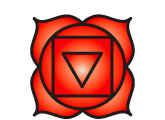
Muladhara (Sanskrit: मूलाधार, IAST: Mūlādhāra, English: "root support") or root chakra is symbolized by a lotus with four petals and the color red. This center is located at the base of the spine in the coccygeal region. It is said to relate to the gonads and the adrenal medulla, responsible for the fight-or-flight response when survival is under threat.[46] The seed syllable is LAM.
Muladhara is related to instinct, security, survival and also to basic human potentiality. Physically, Muladhara governs sexuality, mentally it governs stability, emotionally it governs sensuality, and spiritually it governs a sense of security.[47] Muladhara also has a relation to the sense of smell.[48]
This chakra is where the three main nadi separate and begin their upward movement. Dormant Kundalini rests here, wrapped three and a half times around the black Svayambhu linga, the lowest of three obstructions to her full rising (also known as knots or granthis).[49] It is the seat of the red bindu, the female drop (which in Tibetan vajrayana is located at the navel chakra).[clarification needed]
The seed syllable is Lam (pronounced lum), the deity is Ganesh,[citation needed] and the Shakti is Dakini.[50] The associated animal is the elephant.[51]
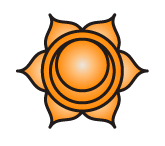
Svadhishthana (Sanskrit: स्वाधिष्ठान, IAST: Svādhiṣṭhāna, English: "one's own base") or sacral chakra is symbolized by a white lotus within which is a crescent moon, with six vermilion, or orange petals. The seed mantra is Vam, and the presiding deity is Brahma, with the Shakti being Rakini (or Chakini). The animal associated is the crocodile of Varuna.
This chakra is located in the sacrum and is considered to correspond to the testes or the ovaries that produce the various sex hormones involved in the reproductive cycle. Svadhishthana is also considered to be related to, more generally, the genitourinary system and the adrenals. The key issues involving Svadhishthana are relationships, violence, addictions, basic emotional needs and pleasure. Physically, Svadhishthana governs reproduction, mentally it governs creativity, emotionally it governs joy, and spiritually it governs enthusiasm.[45]
This chakra is located in the sacrum and is considered to correspond to the testes or the ovaries that produce the various sex hormones involved in the reproductive cycle. Svadhishthana is also considered to be related to, more generally, the genitourinary system and the adrenals. The key issues involving Svadhishthana are relationships, violence, addictions, basic emotional needs and pleasure. Physically, Svadhishthana governs reproduction, mentally it governs creativity, emotionally it governs joy, and spiritually it governs enthusiasm.[45]
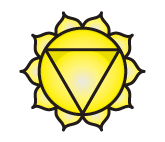
Manipura (Sanskrit: मणिपूर, IAST: Maṇipūra, English: "jewel city") or solar plexus/navel chakra is symbolised by a downward pointing triangle with ten petals, along with the color yellow. The seed syllable is Ram, and the presiding deity is Braddha Rudra, with Lakini as the Shakti.
Manipura is related to the metabolic and digestive systems. Manipura is believed to correspond to Islets of Langerhans,[43] which are groups of cells in the pancreas, as well as the outer adrenal glands and the adrenal cortex. These play a valuable role in digestion, the conversion of food matter into energy for the body. The colour that corresponds to Manipura is yellow. Key issues governed by Manipura are issues of personal power, fear, anxiety, opinion-formation, introversion, and transition from simple or base emotions to complex. Physically, Manipura governs digestion, mentally it governs personal power, emotionally it governs expansiveness, and spiritually, all matters of growth.[44]
Corresponding deity for material element of this chakra is Agni.
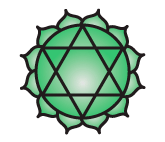
Anahata (Sanskrit: अनाहत, IAST: Anāhata, English: "unstruck") or heart chakra is symbolised by a circular flower with twelve green petals called the heartmind. Within it is a yantra of two intersecting triangles, forming a hexagram, symbolizing a union of the male and female. The seed mantra is Yam, the presiding deity is Ishana Rudra Shiva, and the Shakti is Kakini.
Anahata is related to the thymus, located in the chest. The thymus is an element of the immune system as well as being part of the endocrine system. It is the site of maturation of the T cells responsible for fending off disease and may be adversely affected by stress. Anahata is related to the colours green or pink. Key issues involving Anahata involve complex emotions, compassion, tenderness, unconditional love, equilibrium, rejection and well-being. Physically Anahata governs circulation, emotionally it governs unconditional love for the self and others, mentally it governs passion, and spiritually it governs devotion.[42]
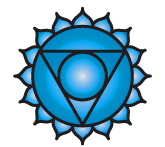
Vishuddha (Sanskrit: विशुद्ध, IAST: Viśuddha, English: "especially pure"), or Vishuddhi, or throat chakra is depicted as a silver crescent within a white circle, with 16 light or pale blue, or turquoise petals. The seed mantra is Ham, and the residing deity is Panchavaktra shiva, with 5 heads and 4 arms, and the Shakti is Shakini.
Vishuddha may be understood as relating to communication and growth through expression. This chakra is paralleled to the thyroid, a gland that is also in the throat and which produces thyroid hormone, responsible for growth and maturation. Physically, Vishuddha governs communication, emotionally it governs independence, mentally it governs fluent thought, and spiritually, it governs a sense of security.[41]
In Tibetan buddhism, this chakra is red, with 16 upward pointing petals. It plays an important role in Dream Yoga, the art of lucid dreaming.
Corresponding deity for material element of this chakra is Dyaus.
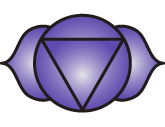
Ajna (Sanskrit: आज्ञा, IAST: Ājñā, English: "command") or third-eye chakra is symbolised by a lotus with two petals, and corresponds to the colours violet, indigo or deep blue, though it is traditionally described as white. It is at this point that the two side nadi Ida (yoga) and Pingala are said to terminate and merge with the central channel Sushumna, signifying the end of duality, the characteristic of being dual (e.g. light and dark, or male and female). The seed syllable for this chakra is the syllable OM, and the presiding deity is Ardhanarishvara, who is a half male, half female Shiva/Shakti. The Shakti goddess of Ajna is called Hakini.
Ajna (along with Bindu), is known as the third eye chakra and is linked to the pineal gland which may inform a model of its envisioning. The pineal gland is a light sensitive gland that produces the hormone melatonin which regulates sleep and waking up, and is also postulated to be the production site of the psychedelic dimethyltryptamine, the only known hallucinogen endogenous to the human body. Ajna's key issues involve balancing the higher and lower selves and trusting inner guidance. Ajna's inner aspect relates to the access of intuition. Mentally, Ajna deals with visual consciousness. Emotionally, Ajna deals with clarity on an intuitive level.[40]
Ajna (along with Bindu), is known as the third eye chakra and is linked to the pineal gland which may inform a model of its envisioning. The pineal gland is a light sensitive gland that produces the hormone melatonin which regulates sleep and waking up, and is also postulated to be the production site of the psychedelic dimethyltryptamine, the only known hallucinogen endogenous to the human body. Ajna's key issues involve balancing the higher and lower selves and trusting inner guidance. Ajna's inner aspect relates to the access of intuition. Mentally, Ajna deals with visual consciousness. Emotionally, Ajna deals with clarity on an intuitive level.[40]
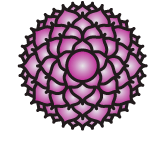
Sahasrara (Sanskrit: सहस्रार, IAST: Sahasrāra, English: "thousand-petaled") or crown chakra is generally considered to be the state of pure consciousness, within which there is neither object nor subject. When the Kundalini energy rises to this point, it unites with the male Shiva energy, and a state of liberating samadhi is attained. Symbolized by a lotus with one thousand multi-coloured petals, it is located either at the crown of the head, or above the crown of the head. Sahasrara is represented by the colour white and it involves such issues as inner wisdom and the death of the body.
Its role may be envisioned somewhat similarly to that of the pituitary gland, which secretes hormones to communicate to the rest of the endocrine system and also connects to the central nervous system via the hypothalamus. According to Gary Osborn, the thalamus is thought to have a key role in the physical basis of consciousness and is the 'Bridal Chamber' mentioned in the Gnostic scriptures. Sahasrara's inner aspect deals with the release of karma, physical action with meditation, mental action with universal consciousness and unity, and emotional action with "beingness."[39]
In Tibetan Buddhism, the point at the crown of the head is represented by a white circle, with 33 downward pointing petals. It is of primary importance in the performance of phowa, or consciousness projection after death, in order to obtain rebirth in a Pure Land. Within this state is contained the White drop, or Bodhicitta, which is the essence of masculine energy.
Corresponding deity for material element of this state is Dhruva.
The resulting energetic field is your Aura. It has two fundamental frequencies but also a highly dynamic frequency. The two fundamental frequencies are given by: 1. A general color/vibrational print, describing your basic personality. 2. The main frequency you function with at a given time, it corresponds to life stages, you current mental, health, spiritual state. But the aura as I said is very dynamic, and the dynamic layer shows how things evolve from one another and that theoretically, your aura can radically change any moment, the potential for this is 100% open.
The aura of a fully accomplished, healthy, happy and highly spiritual being is fundamentally rainbow (on levels 1 and 2, as described above). This is our ideal aura. But the dynamic layer of the aura changes all the time according to emotions, moods, actions, what we experience and would show an emphasis of that color frequency, just like a game of flashing lights.
The aura of a fully accomplished, healthy, happy and highly spiritual being is fundamentally rainbow (on levels 1 and 2, as described above). This is our ideal aura. But the dynamic layer of the aura changes all the time according to emotions, moods, actions, what we experience and would show an emphasis of that color frequency, just like a game of flashing lights.
The basic color meanings for auras show great similarity with chakra symbolism and it is in accordance to what I see and experience, that the aura is the result of dynamic chakra activation.
AURA COLOR MEANINGS
RED AURA: Relates to the physical body, heart and body circulation system. The densest color, it creates the most friction. Friction attracts or repels; intense mental or physical state; material worries or obsessions; anger or unforgiveness; anxiety or nervousness. Great energy and charisma. Sometimes excess of energy in need of channeling. An intense process of healing taking place in the body, the body fights with something.
DEEP RED: Grounded, realistic, active, strong will-power, survival-oriented.
MUDDY RED: Anger (repelling)
CLEAR RED: Passionate, powerful, energetic, competitive, sexual. In a good, bright and pure state, red energy can serve as a healthy ego. It shows an intense process of healing, health of the body.
PINK-BRIGHT AND LIGHT: A color of love, corresponding to Anahata. Loving, tender, sensitive, sensual, artistic, affection, purity, compassion; new or revived romantic relationship. Can indicate clairaudience.
DARK AND MURKY PINK: Immature and/or using a system of masks, defenses.
ORANGE RED: Confidence, creative power.
ORANGE AURA: Relates to reproductive system and positive emotions. Sometimes ego-oriented, excessively. The color of vitality, vigor, good health and excitement. Lots of energy and stamina, creative, productive, adventurous, courageous, outgoing social nature; currently experiencing stress related to appetites and addictions; appetite, zest for life.
ORANGE-YELLOW: Creative, intelligent, detail oriented, perfectionist, scientific.
YELLOW AURA: Relates to the spleen and life energy. It is the color of awakening, inspiration, intelligence and shared action, creative, playful, optimistic, easy-going. The color of creativity.
LIGHT OR PALE YELLOW: Emerging psychic and spiritual awareness; optimism and hopefulness; positive excitement about new ideas.
BRIGHT LEMON-YELLOW: Struggling to maintain power and control in a personal or business relationship; fear of losing control, prestige, respect, and/or power.
CLEAR GOLD - METALLIC BRIGHT AND SHINY: Spiritual energy and power activated and awakened; an inspired person.
DARK BROWNISH YELLOW OR GOLD: A student, or one who is straining at studying; overly analytical to the point of feeling fatigued or stressed; trying to make up for "lost time" by learning everything all at once.
GREEN AURA: Relates to heart and lungs. Another Anahata color, it shows love and openness to love. Healer. Teacher and creator. Great social skills. It is a very comfortable, healthy color of being positively connected with the environment. Growth and balance, and most of all, something that leads to change. Love of people, animals, nature.
BRIGHT EMERALD GREEN: A healer, also a love-centered person.
YELLOW-GREEN: Creative with heart, communicative. Passionate.
DARK OR MUDDY FOREST GREEN: Jealousy, resentment, feeling like a victim; blaming self or others; insecurity and low self-esteem; lack of understanding personal responsibility; sensitive to perceived criticism.
TURQUOISE: Relates to the immune system. Sensitive, compassionate, healer, therapist.
BLUE AURA: Relates to the throat and the thyroid. Cool, calm, and collected. Caring, loving, loves to help others, sensitive, intuitive.
LIGHT BLUE: Peacefulness, clarity and communication; truthful; intuitive
BRIGHT ROYAL BLUE: Clairvoyant; highly spiritual nature; generous; on the right path; new opportunities are coming.
DARK OR MUDDY BLUE: Fear of the future; fear of self-expression; fear of facing or speaking the truth.
INDIGO AURA: Relates to the third eye, the pineal/pituitary glands. Intuitive, sensitive, deep feelings.
VIOLET AURA: Relates to Sahasrara, the Crown chakra, pineal/pituitary glands and nervous system. The color of intuition, it reveals psychic powers of attunement with self and others. Intuitive, visionary, futuristic, idealistic, artistic, magical.
LAVENDER AURA: Imagination, visionary, daydreamer, activated telepathy and astral connections.
SILVER AURA: Strong Yin, lunar frequency, receptive and reflective. Adaptation. Transmutation.
BRIGHT METALLIC SILVER: Receptive to new ideas; intuitive; nurturing
DARK AND MUDDY GRAY: Residue of fear is accumulating in the body, with a potential for health problems, especially if grey clusters are seen in specific areas of the body.
GOLD AURA: The color of enlightenment and divine protection. When seen within the aura, it says that the person is being guided by their highest mind and heart. Divine guidance. Protection, wisdom, inner knowledge, spiritual mind, intuitive thinker, healer, master.
BLACK AURA: Draws or pulls energy to it and in so doing, transforms it. It captures light and energy and consumes it or, as best result, transforms it. It can indicate long-term negative patterns collected in a specific area of the body, which can lead to health problems; persistent grief or grudges; energetic “vampirism”. It indicates an area where the person needs to take energy from others or the environment, associated with an energetic block.
WHITE AURA: Reflects other energy. A pure state of light. Often represents a new, not yet designated energy in the aura. Spiritual, etheric and non-physical qualities, transcendent, higher dimensions. Purity and truth; angelic qualities.
WHITE SPARKLES OR FLASHES OF WHITE LIGHT: New stage, new life, new emergence, new energy; can indicate that the person is pregnant or will be soon.
EARTH COLORS AURA: Soil, wood, minerals, plants. These colors display a love of the earth and a strong connection with the earth such as outdoors jobs, working with plants, animals. Nurturing and practical frequency.
PASTELS: Delicacy, sensitivity, sometimes a weaker connection with life on the incarnation plane, strong etheric body.
DIRTY BROWN OVERLAY: Holding on to energies. Insecurity.
DIRTY GRAY OVERLY: Blocking energies. Defensive attitudes.
Adapted from: Reiki Healing
RED AURA: Relates to the physical body, heart and body circulation system. The densest color, it creates the most friction. Friction attracts or repels; intense mental or physical state; material worries or obsessions; anger or unforgiveness; anxiety or nervousness. Great energy and charisma. Sometimes excess of energy in need of channeling. An intense process of healing taking place in the body, the body fights with something.
DEEP RED: Grounded, realistic, active, strong will-power, survival-oriented.
MUDDY RED: Anger (repelling)
CLEAR RED: Passionate, powerful, energetic, competitive, sexual. In a good, bright and pure state, red energy can serve as a healthy ego. It shows an intense process of healing, health of the body.
PINK-BRIGHT AND LIGHT: A color of love, corresponding to Anahata. Loving, tender, sensitive, sensual, artistic, affection, purity, compassion; new or revived romantic relationship. Can indicate clairaudience.
DARK AND MURKY PINK: Immature and/or using a system of masks, defenses.
ORANGE RED: Confidence, creative power.
ORANGE AURA: Relates to reproductive system and positive emotions. Sometimes ego-oriented, excessively. The color of vitality, vigor, good health and excitement. Lots of energy and stamina, creative, productive, adventurous, courageous, outgoing social nature; currently experiencing stress related to appetites and addictions; appetite, zest for life.
ORANGE-YELLOW: Creative, intelligent, detail oriented, perfectionist, scientific.
YELLOW AURA: Relates to the spleen and life energy. It is the color of awakening, inspiration, intelligence and shared action, creative, playful, optimistic, easy-going. The color of creativity.
LIGHT OR PALE YELLOW: Emerging psychic and spiritual awareness; optimism and hopefulness; positive excitement about new ideas.
BRIGHT LEMON-YELLOW: Struggling to maintain power and control in a personal or business relationship; fear of losing control, prestige, respect, and/or power.
CLEAR GOLD - METALLIC BRIGHT AND SHINY: Spiritual energy and power activated and awakened; an inspired person.
DARK BROWNISH YELLOW OR GOLD: A student, or one who is straining at studying; overly analytical to the point of feeling fatigued or stressed; trying to make up for "lost time" by learning everything all at once.
GREEN AURA: Relates to heart and lungs. Another Anahata color, it shows love and openness to love. Healer. Teacher and creator. Great social skills. It is a very comfortable, healthy color of being positively connected with the environment. Growth and balance, and most of all, something that leads to change. Love of people, animals, nature.
BRIGHT EMERALD GREEN: A healer, also a love-centered person.
YELLOW-GREEN: Creative with heart, communicative. Passionate.
DARK OR MUDDY FOREST GREEN: Jealousy, resentment, feeling like a victim; blaming self or others; insecurity and low self-esteem; lack of understanding personal responsibility; sensitive to perceived criticism.
TURQUOISE: Relates to the immune system. Sensitive, compassionate, healer, therapist.
BLUE AURA: Relates to the throat and the thyroid. Cool, calm, and collected. Caring, loving, loves to help others, sensitive, intuitive.
LIGHT BLUE: Peacefulness, clarity and communication; truthful; intuitive
BRIGHT ROYAL BLUE: Clairvoyant; highly spiritual nature; generous; on the right path; new opportunities are coming.
DARK OR MUDDY BLUE: Fear of the future; fear of self-expression; fear of facing or speaking the truth.
INDIGO AURA: Relates to the third eye, the pineal/pituitary glands. Intuitive, sensitive, deep feelings.
VIOLET AURA: Relates to Sahasrara, the Crown chakra, pineal/pituitary glands and nervous system. The color of intuition, it reveals psychic powers of attunement with self and others. Intuitive, visionary, futuristic, idealistic, artistic, magical.
LAVENDER AURA: Imagination, visionary, daydreamer, activated telepathy and astral connections.
SILVER AURA: Strong Yin, lunar frequency, receptive and reflective. Adaptation. Transmutation.
BRIGHT METALLIC SILVER: Receptive to new ideas; intuitive; nurturing
DARK AND MUDDY GRAY: Residue of fear is accumulating in the body, with a potential for health problems, especially if grey clusters are seen in specific areas of the body.
GOLD AURA: The color of enlightenment and divine protection. When seen within the aura, it says that the person is being guided by their highest mind and heart. Divine guidance. Protection, wisdom, inner knowledge, spiritual mind, intuitive thinker, healer, master.
BLACK AURA: Draws or pulls energy to it and in so doing, transforms it. It captures light and energy and consumes it or, as best result, transforms it. It can indicate long-term negative patterns collected in a specific area of the body, which can lead to health problems; persistent grief or grudges; energetic “vampirism”. It indicates an area where the person needs to take energy from others or the environment, associated with an energetic block.
WHITE AURA: Reflects other energy. A pure state of light. Often represents a new, not yet designated energy in the aura. Spiritual, etheric and non-physical qualities, transcendent, higher dimensions. Purity and truth; angelic qualities.
WHITE SPARKLES OR FLASHES OF WHITE LIGHT: New stage, new life, new emergence, new energy; can indicate that the person is pregnant or will be soon.
EARTH COLORS AURA: Soil, wood, minerals, plants. These colors display a love of the earth and a strong connection with the earth such as outdoors jobs, working with plants, animals. Nurturing and practical frequency.
PASTELS: Delicacy, sensitivity, sometimes a weaker connection with life on the incarnation plane, strong etheric body.
DIRTY BROWN OVERLAY: Holding on to energies. Insecurity.
DIRTY GRAY OVERLY: Blocking energies. Defensive attitudes.
Adapted from: Reiki Healing
